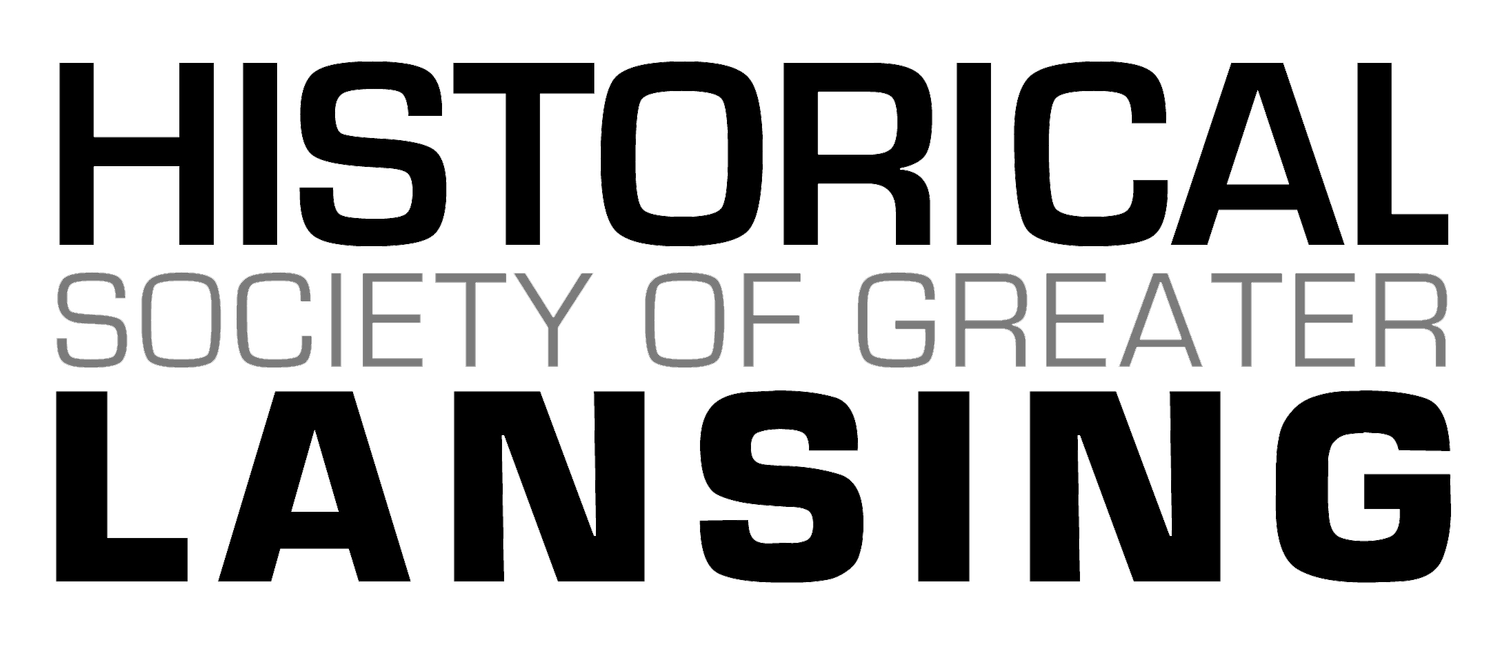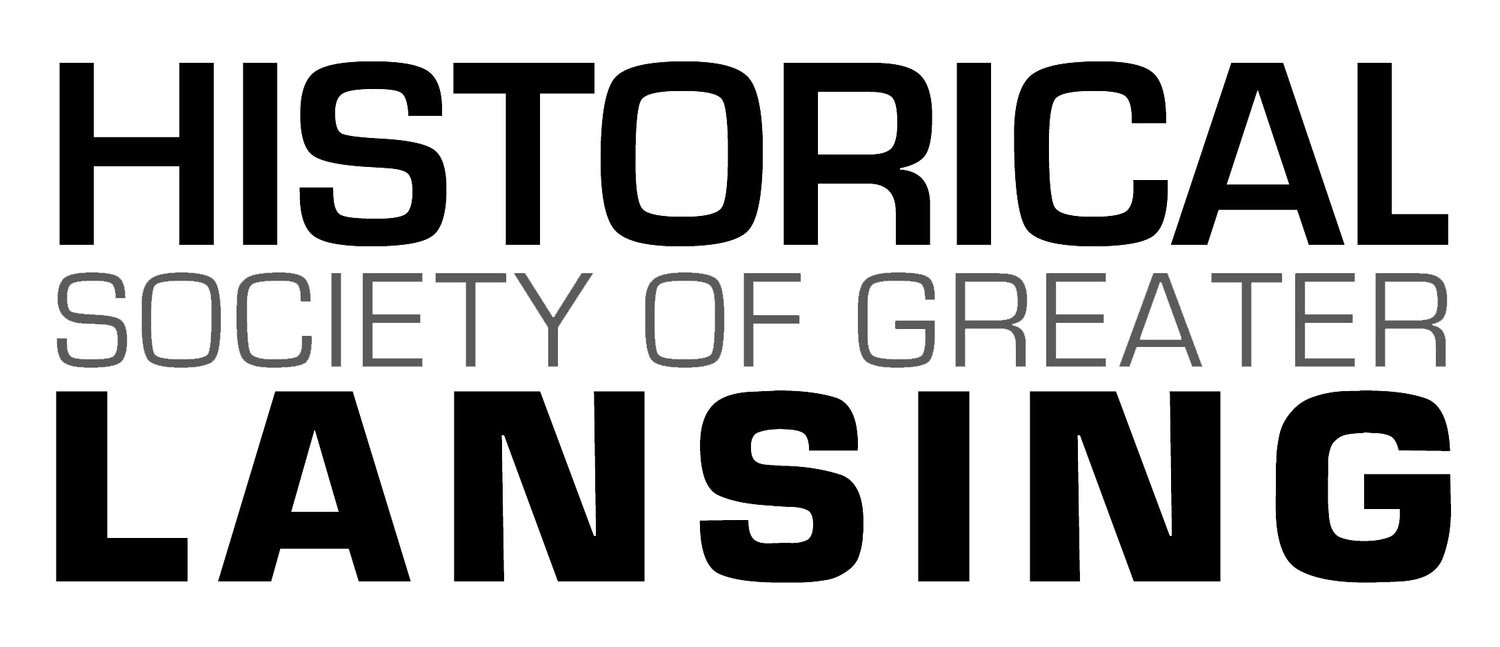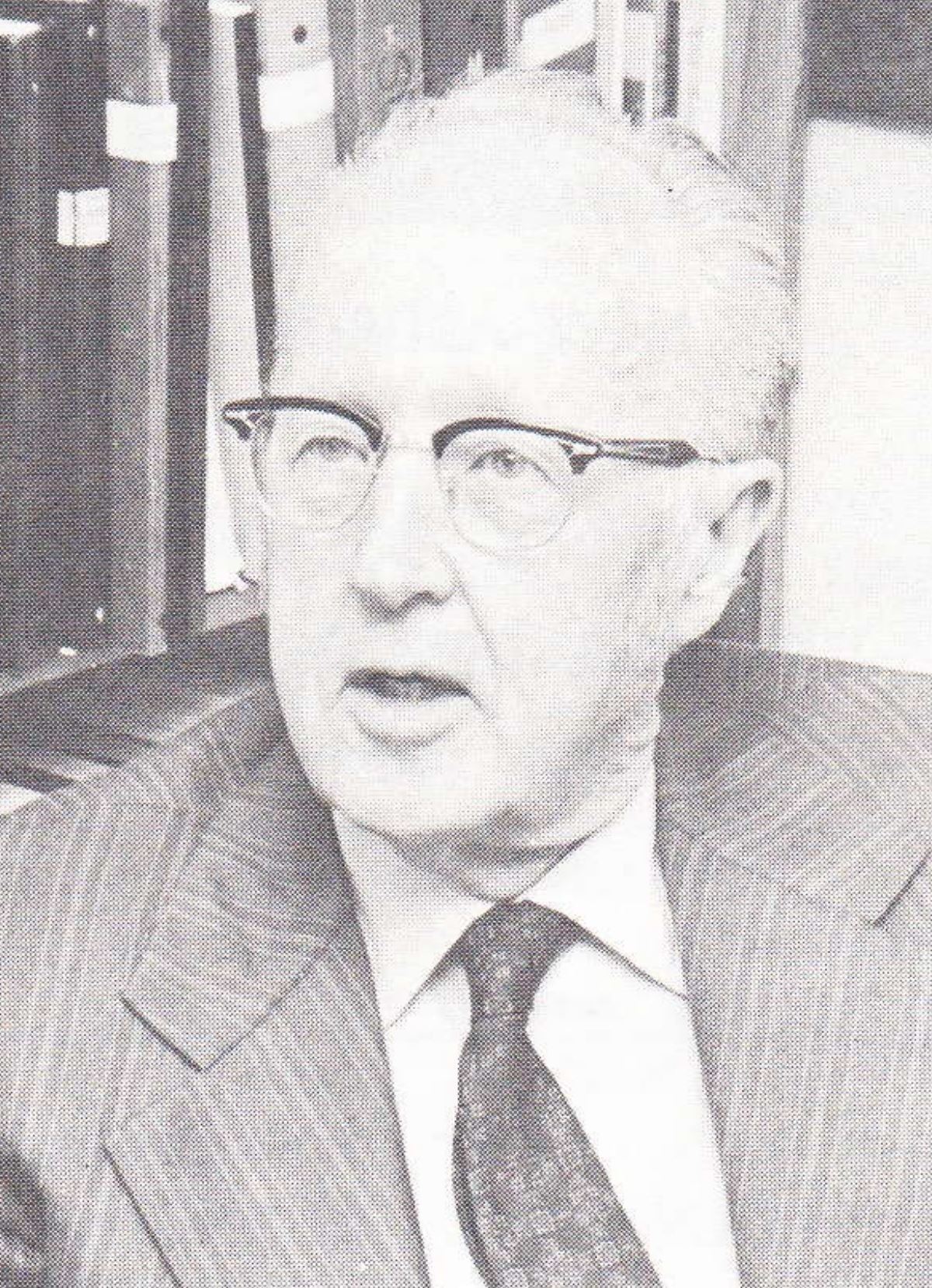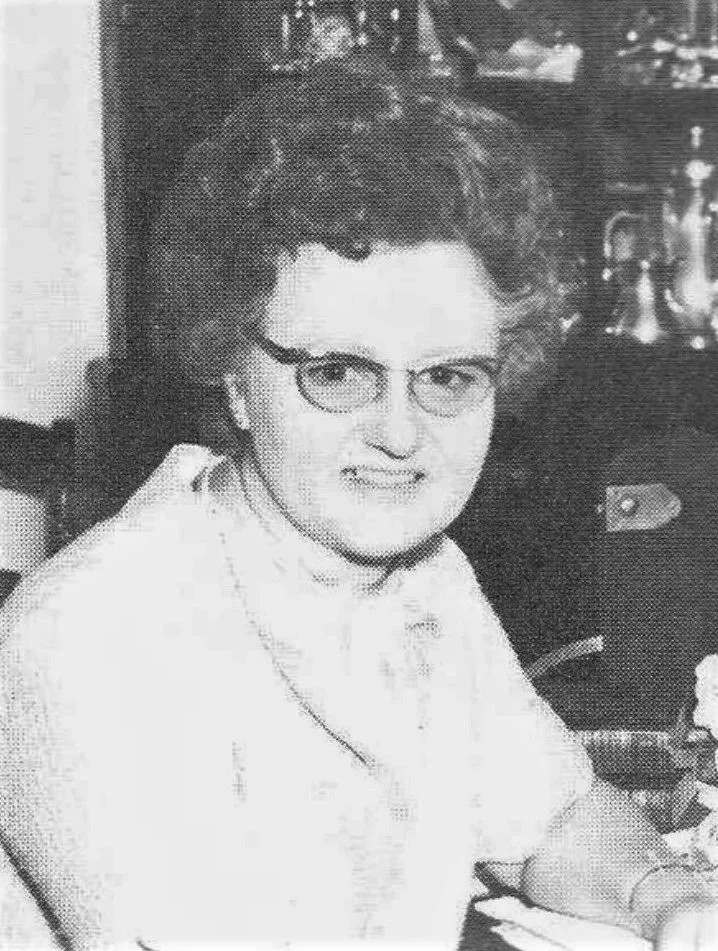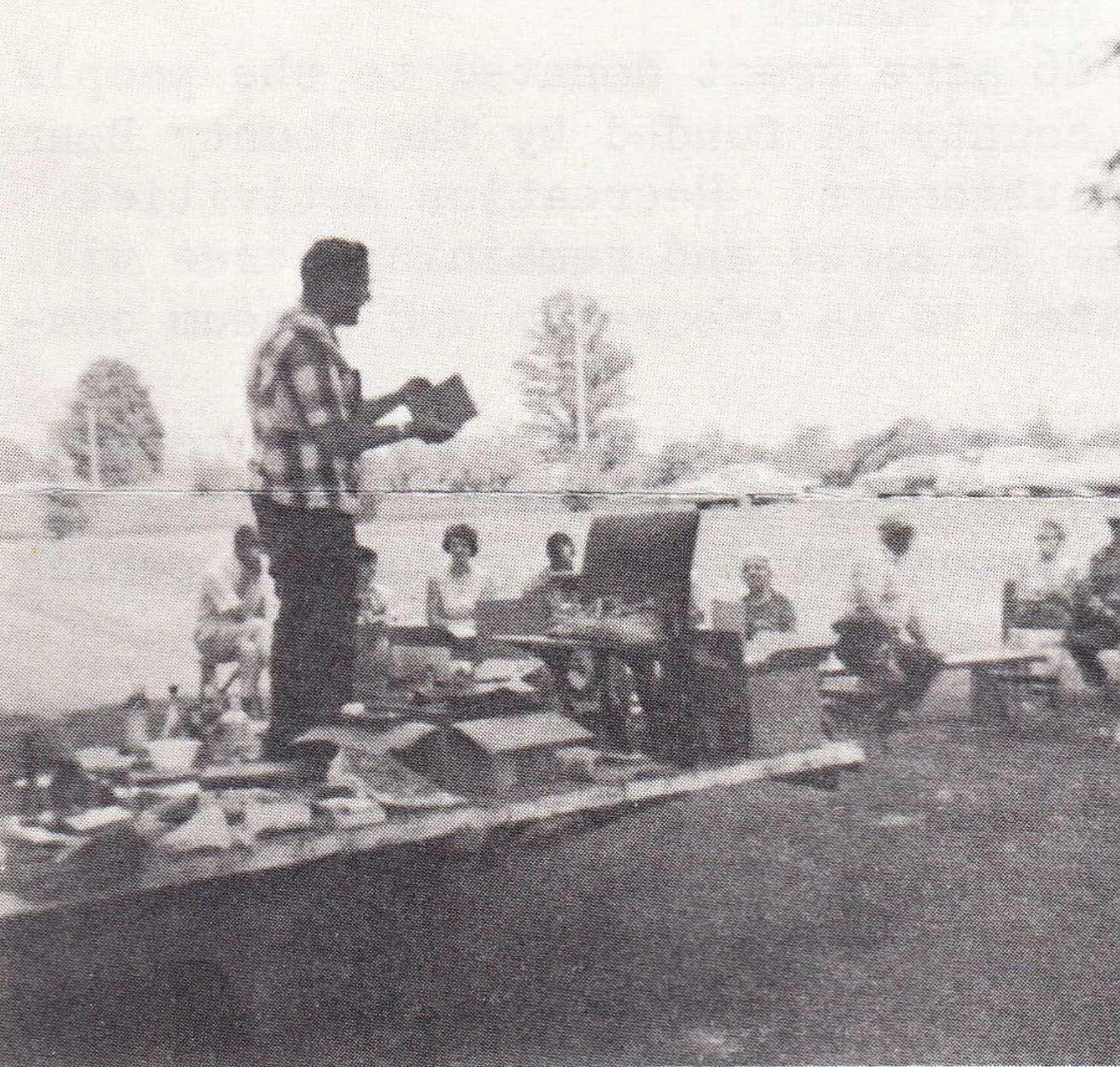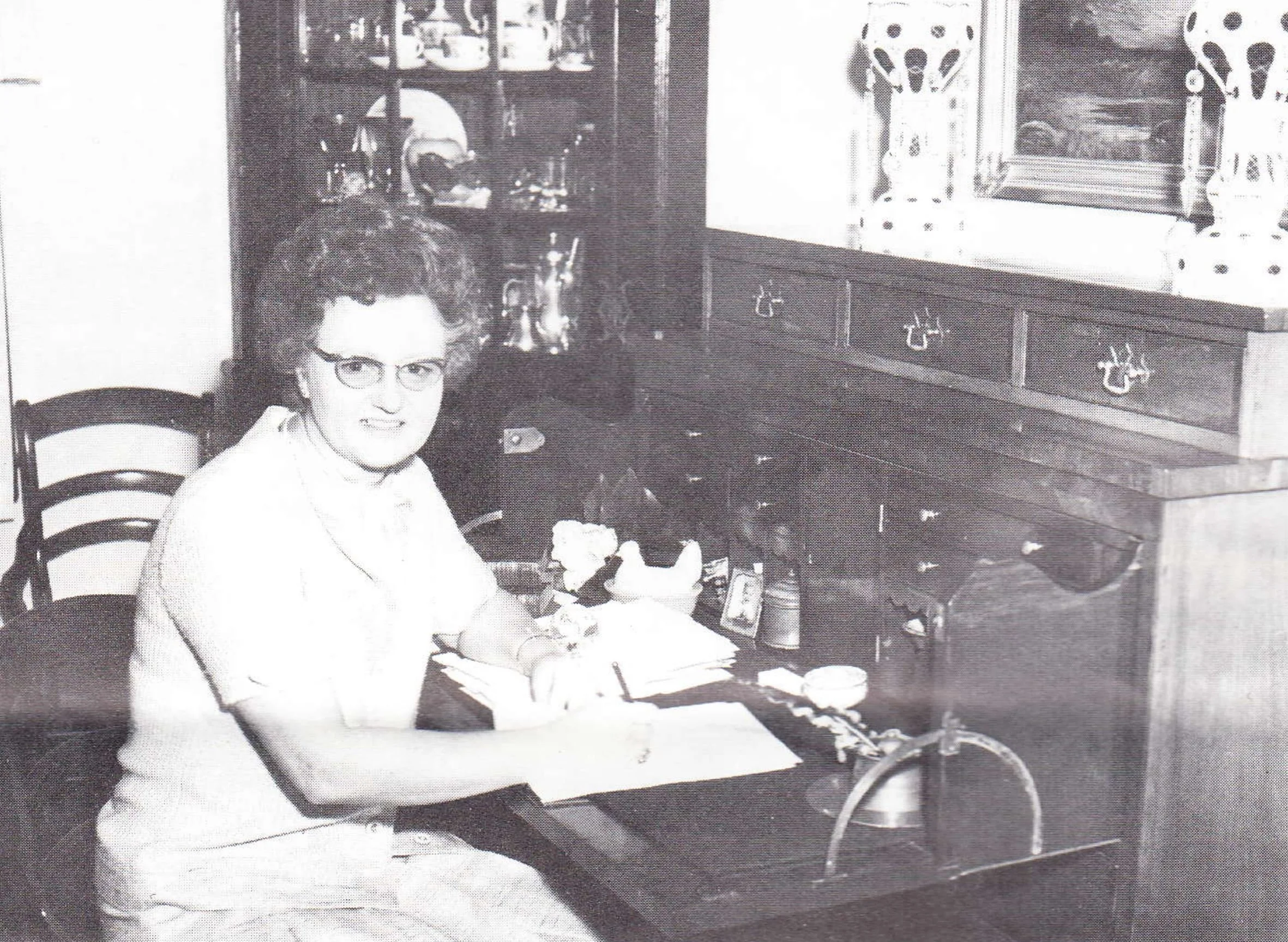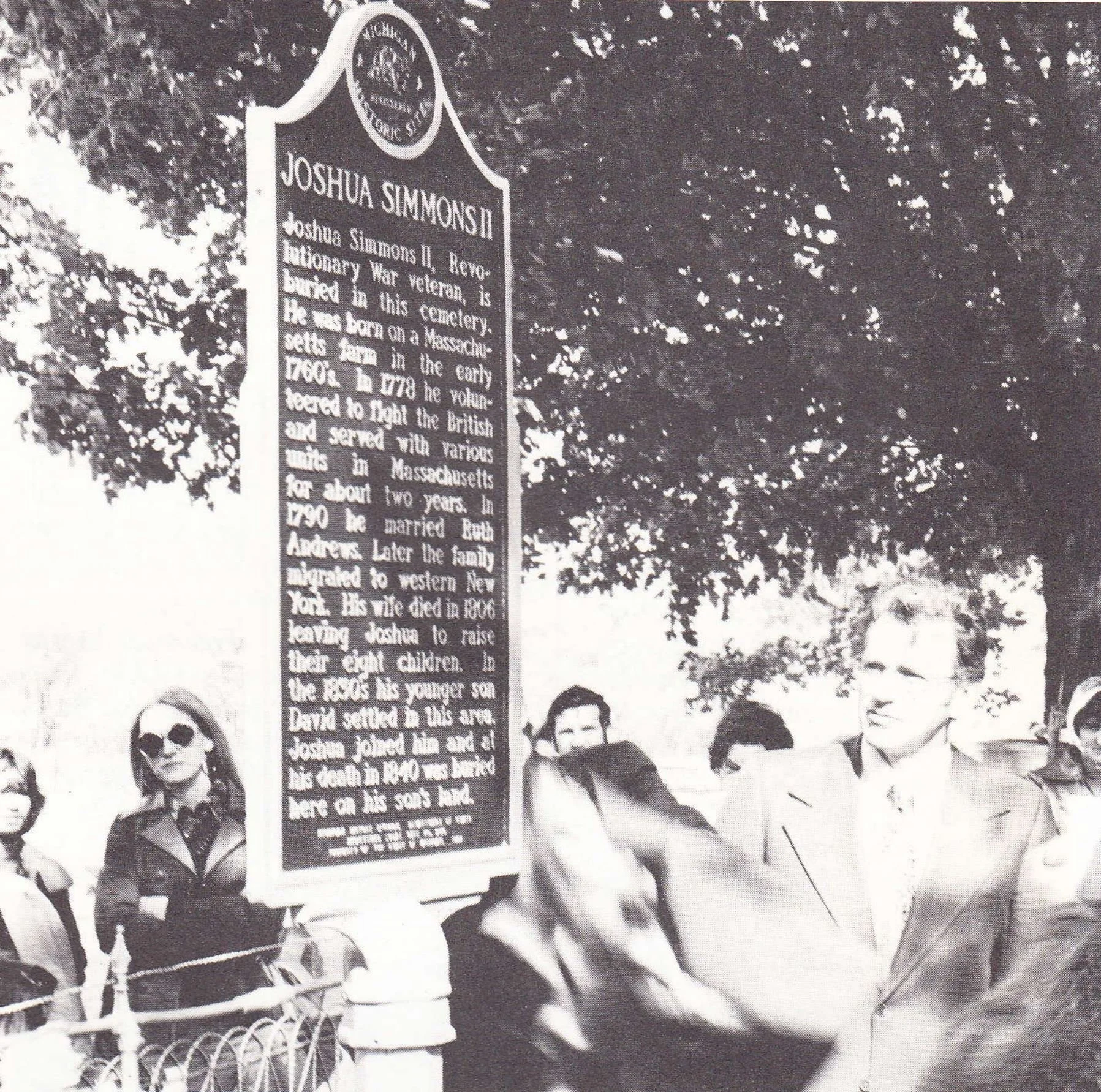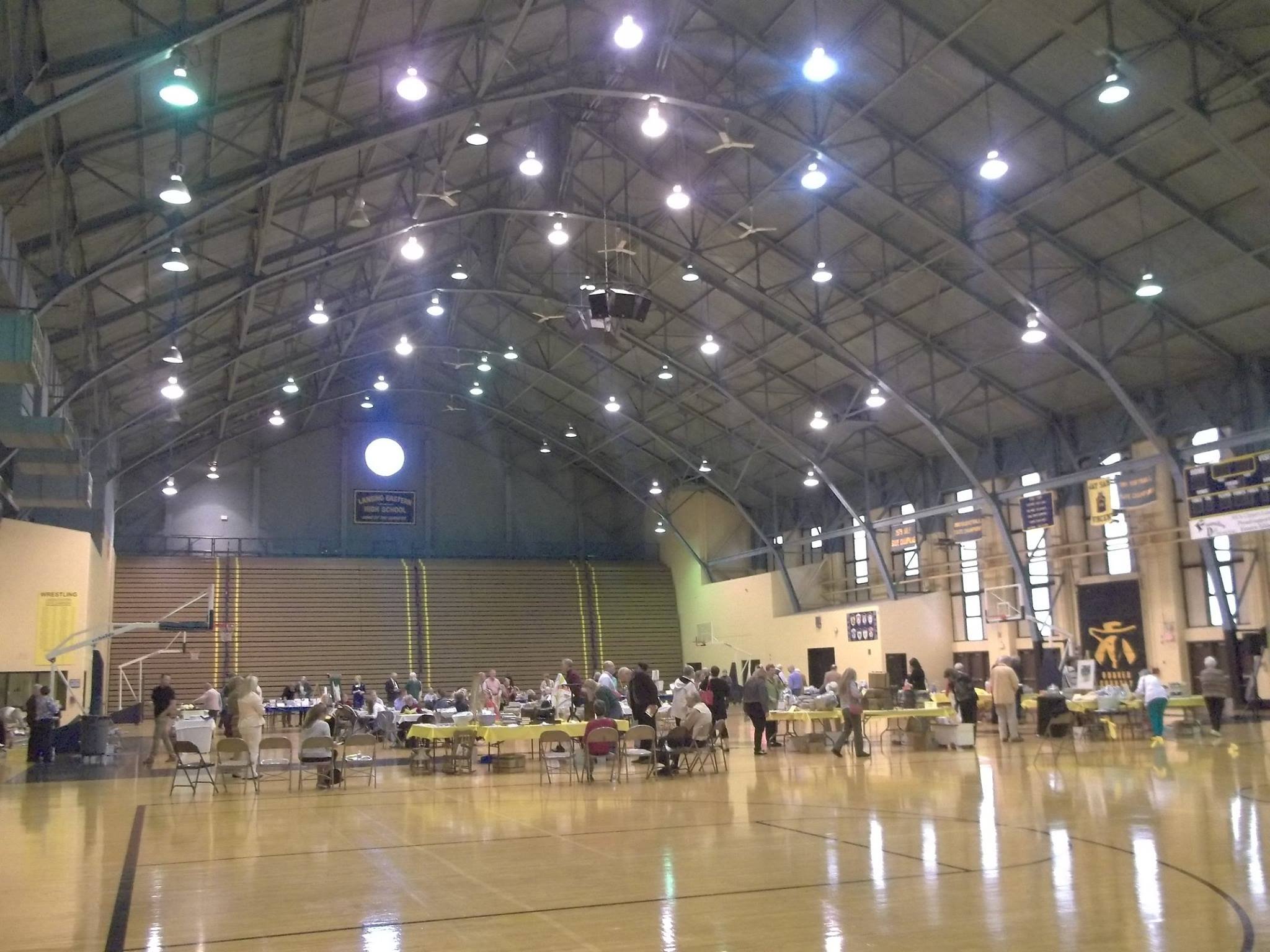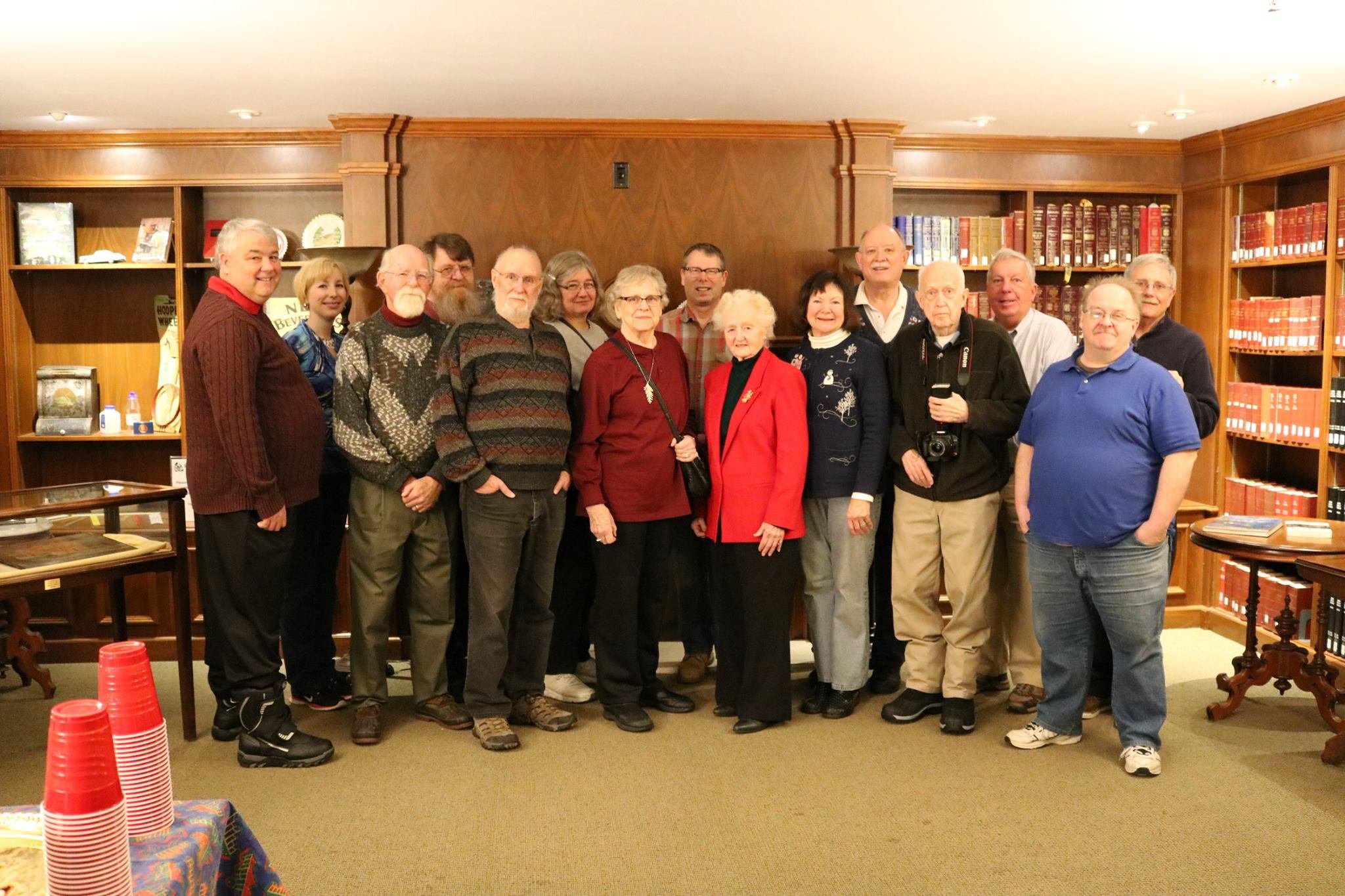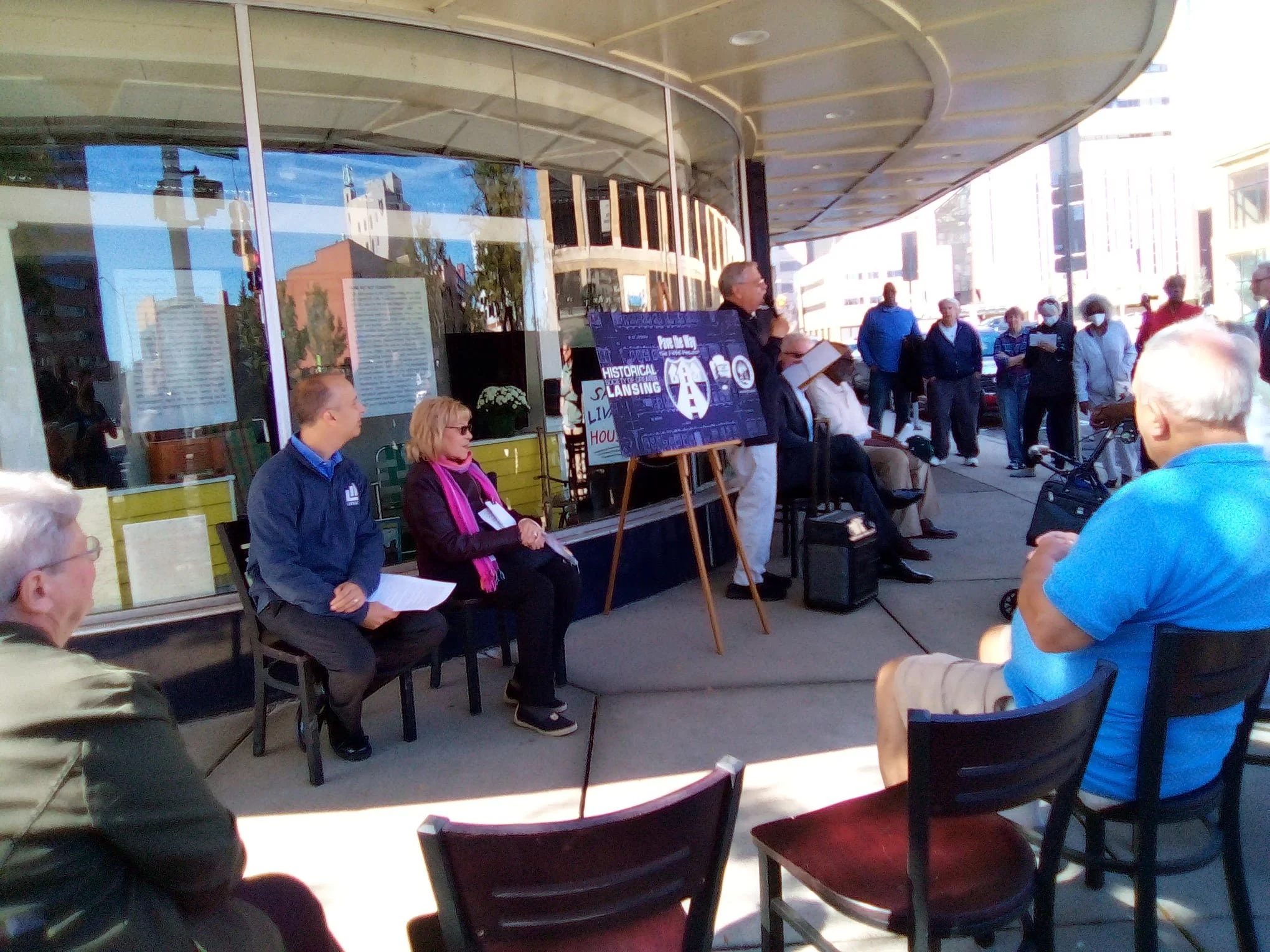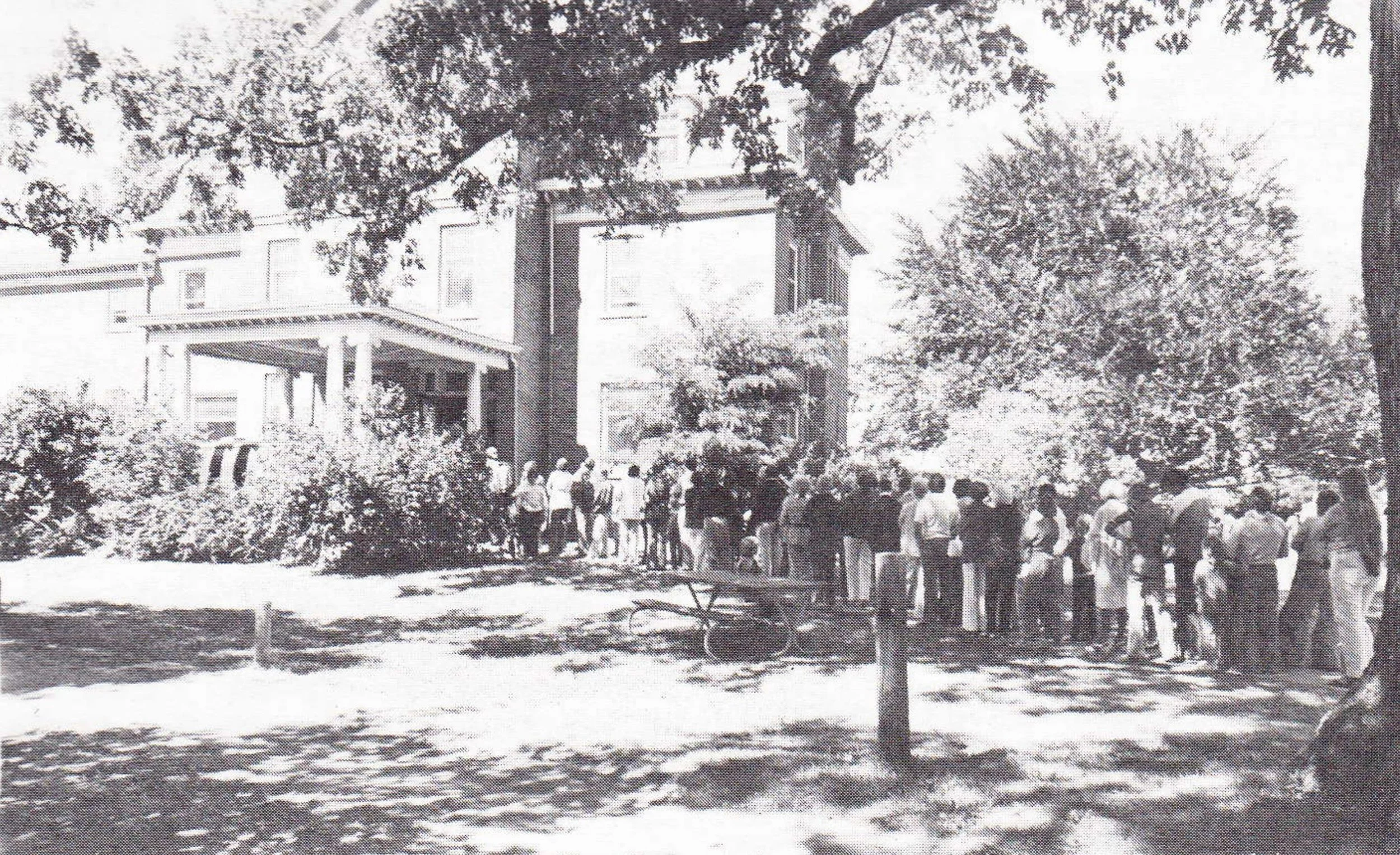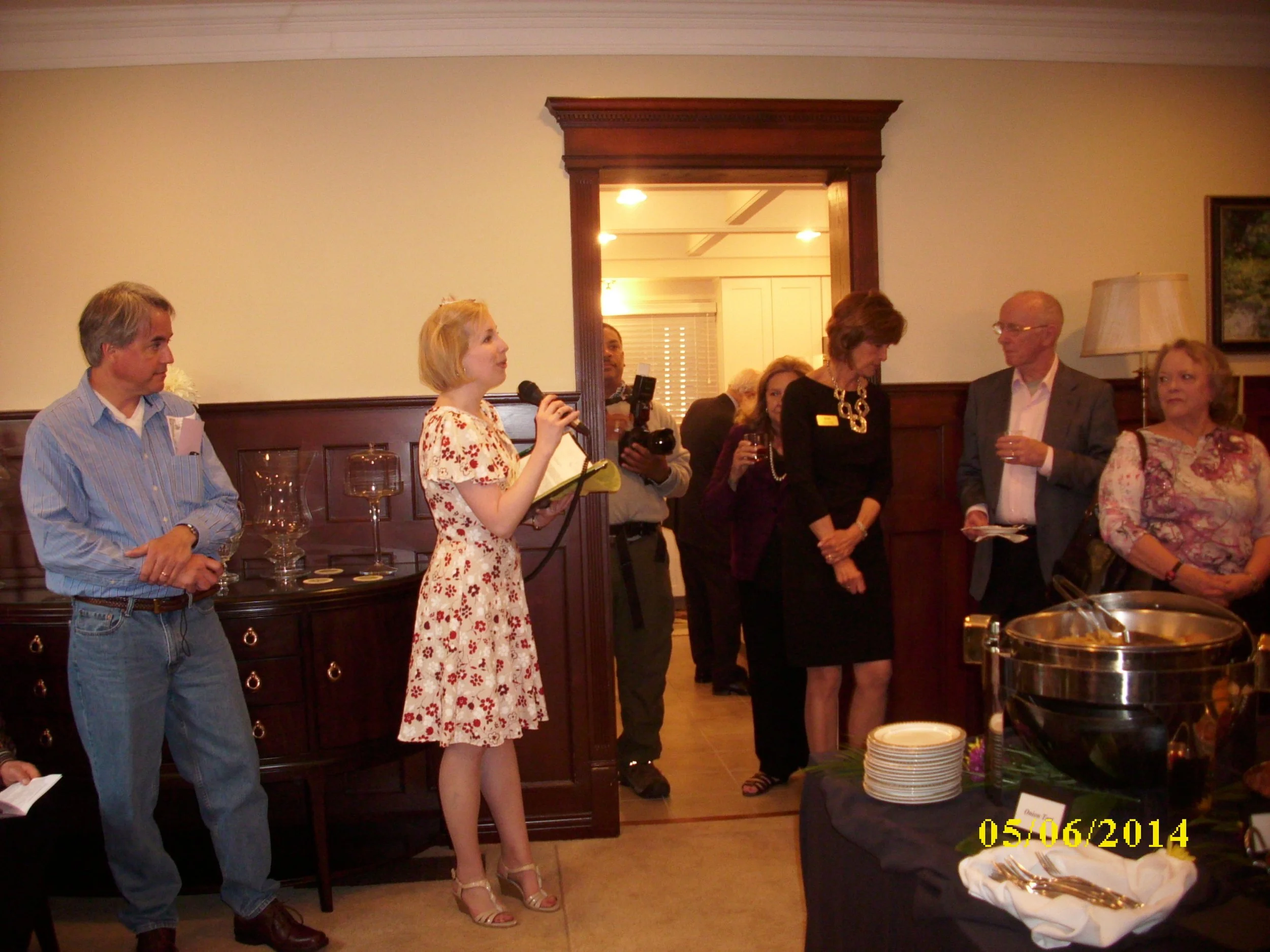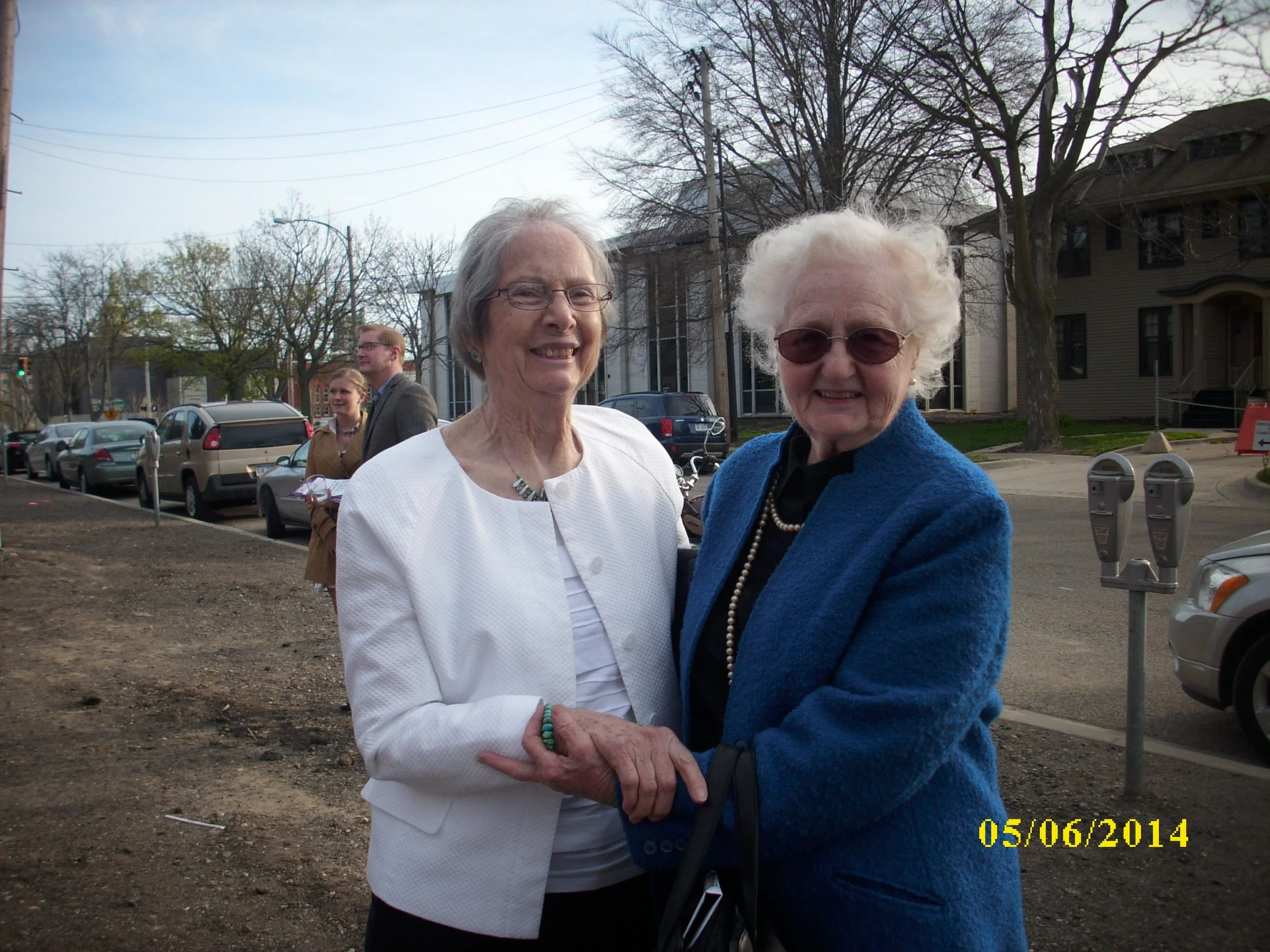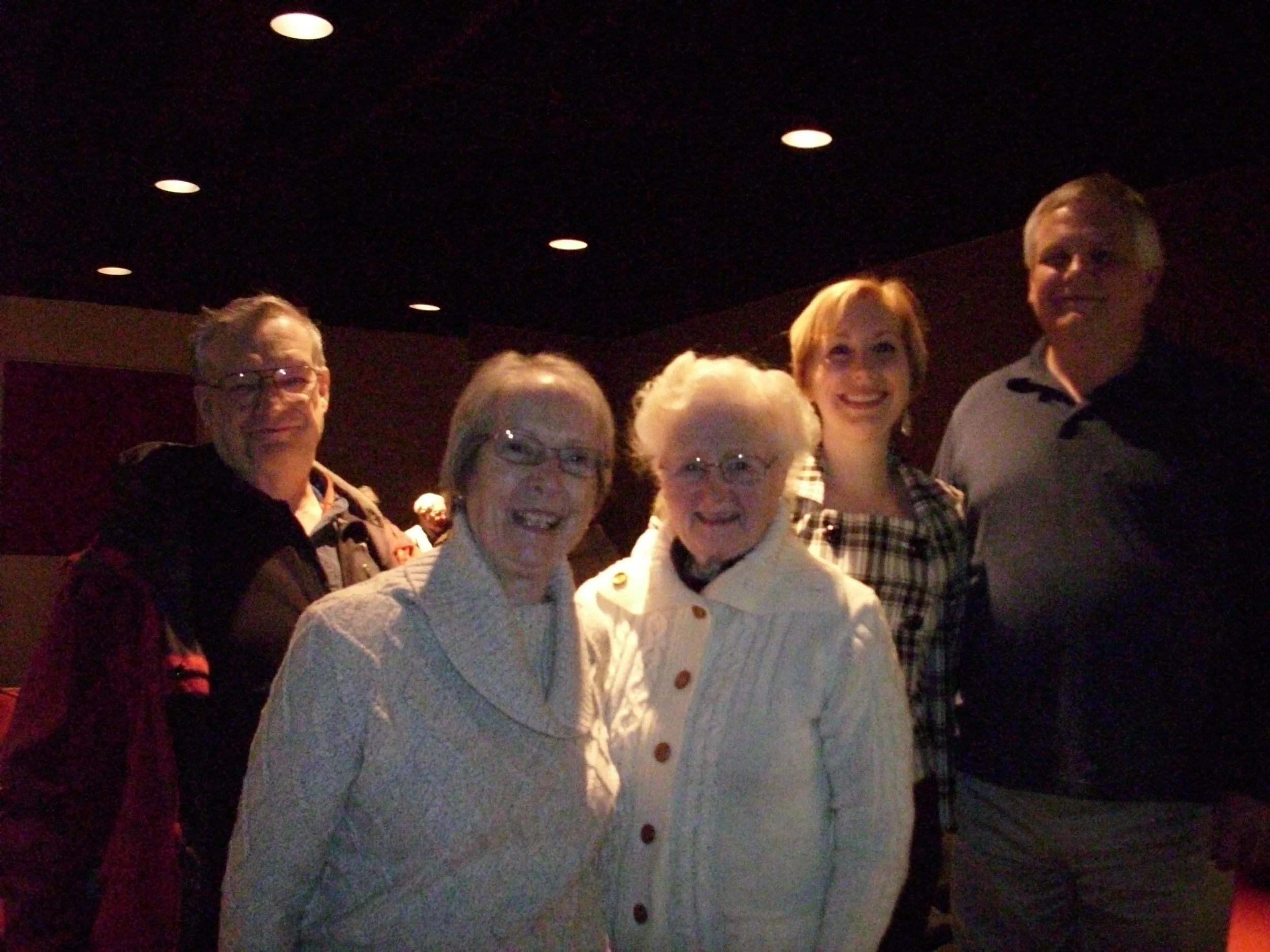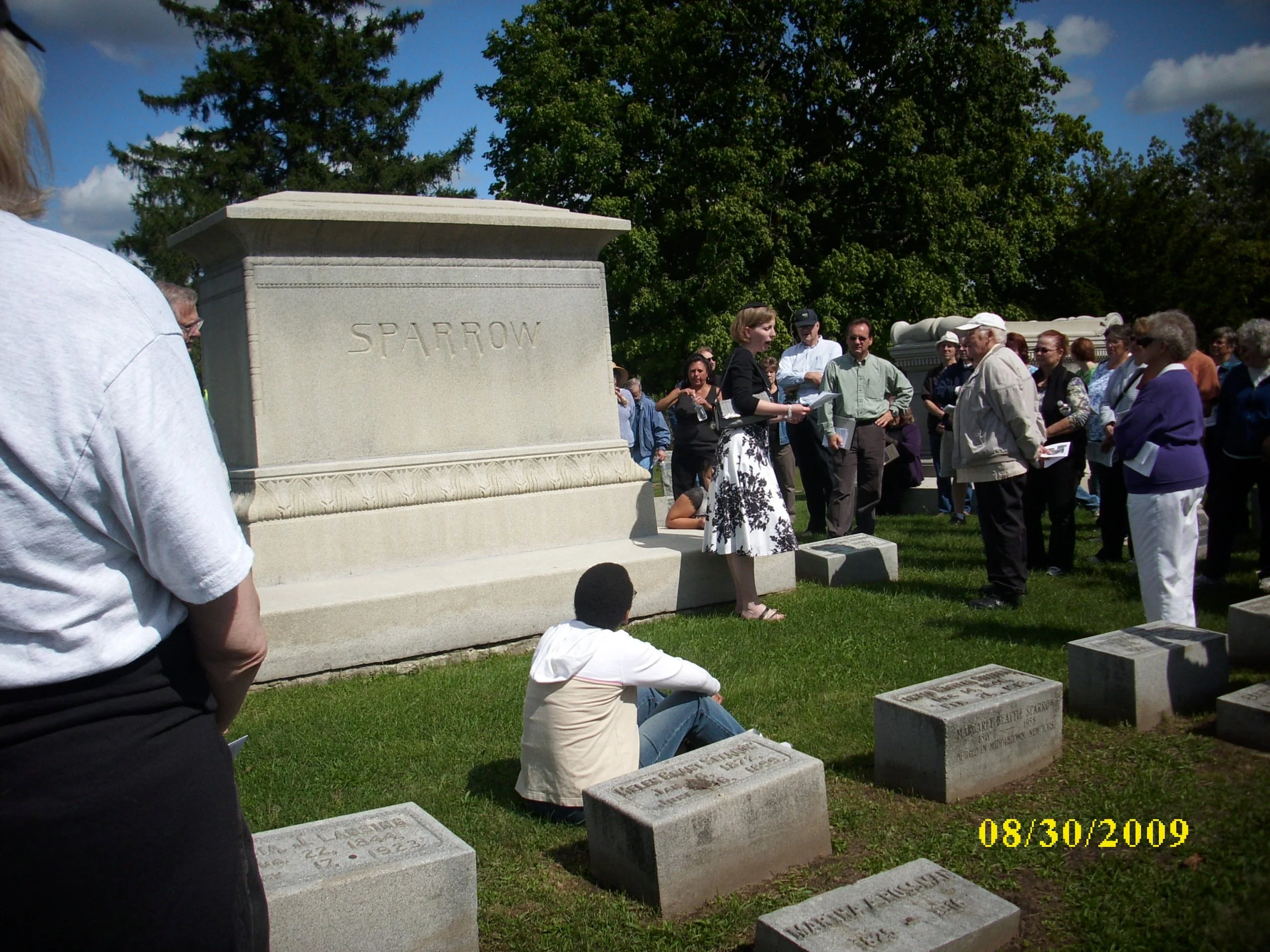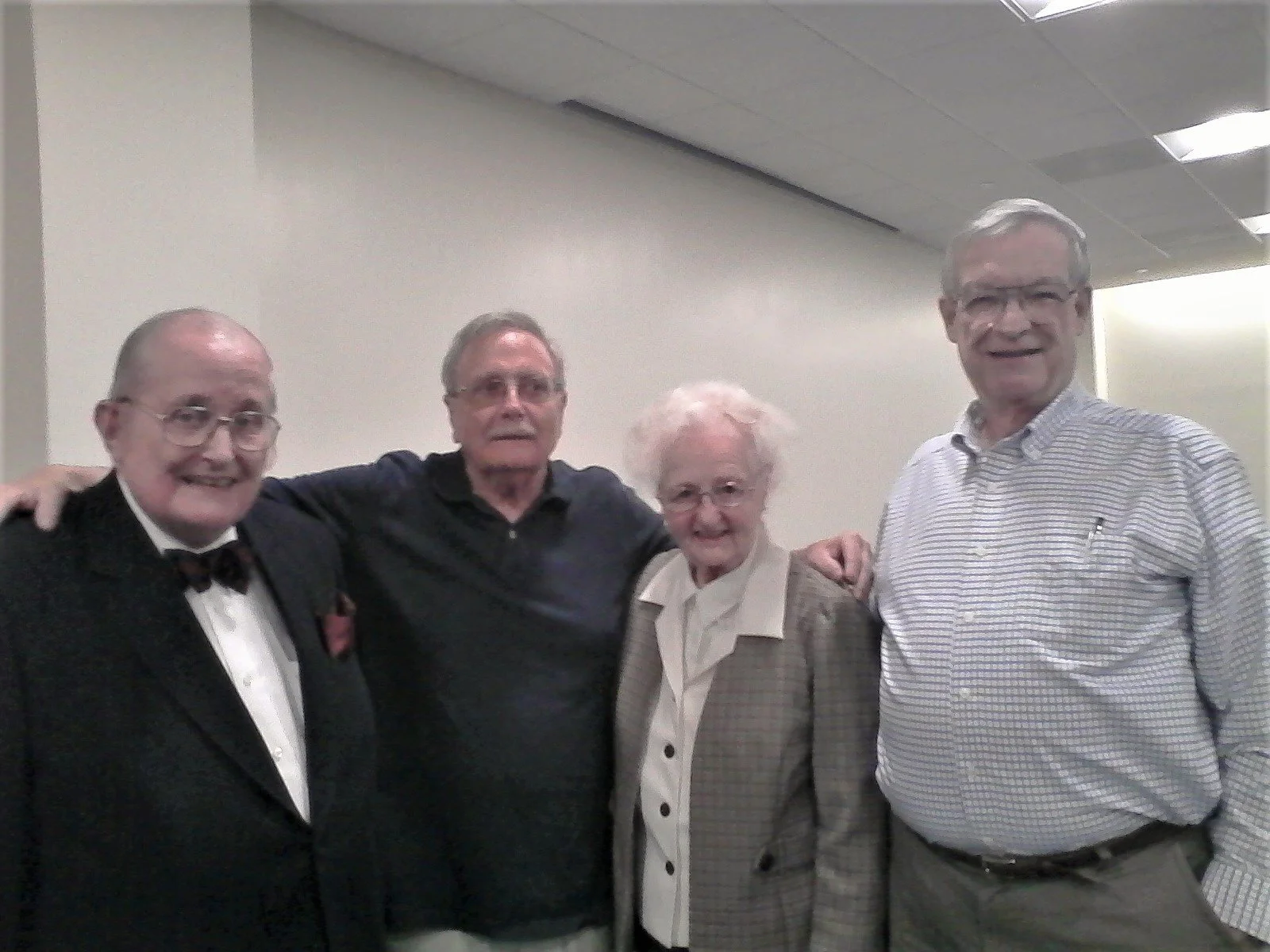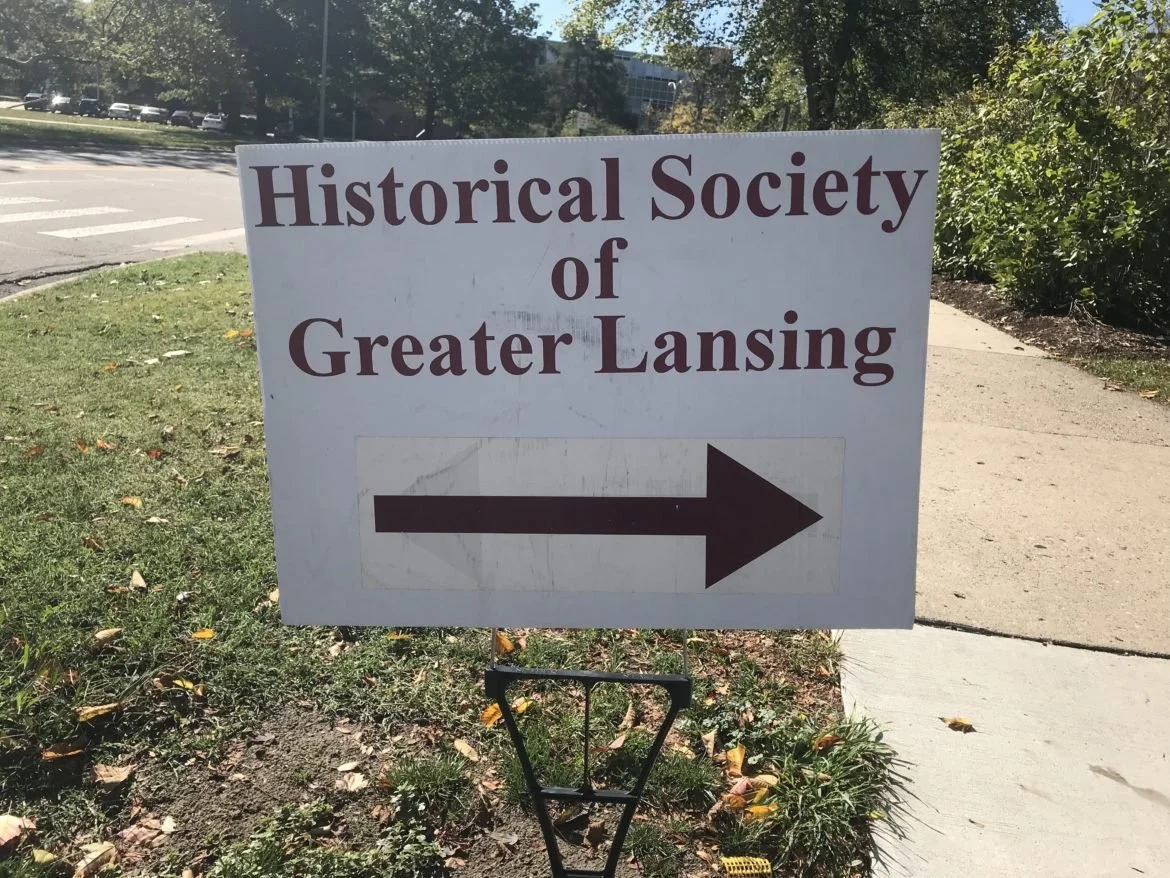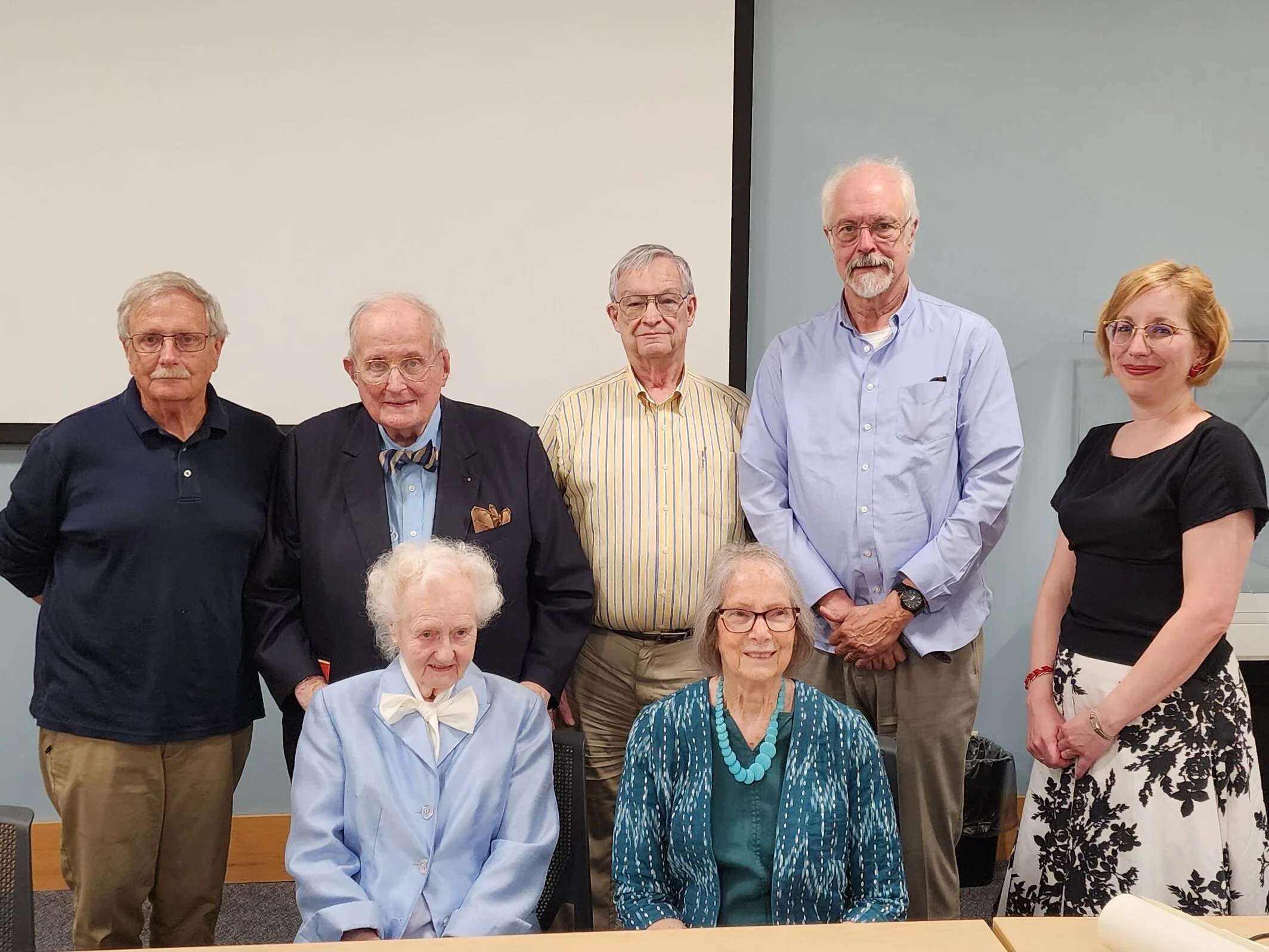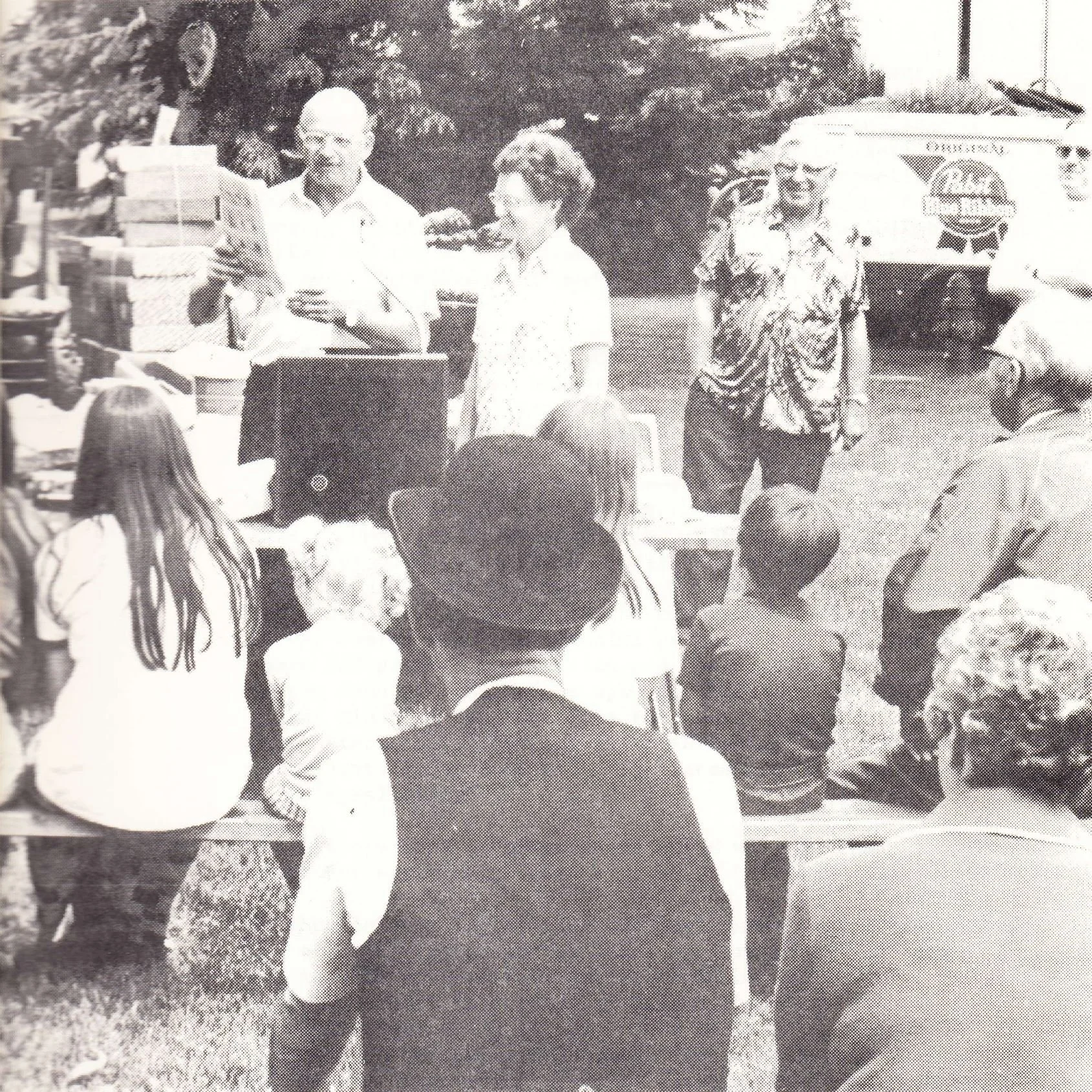
Our History
Since 1947
Lansing Historical Society, 1947-1955
The Lansing Historical Society was established in 1947. The foundational meeting held in March, official articles of incorporation were approved in August, and non-profit status gained by December. The first officers of the LHS were Donald E. Bates, president, Congressman Claude E. Cady, vice president, Floyd G. Randall, executive secretary, and Albert A. Elsesser, treasurer. The society found its first headquarters in Lansing City Hall in January 1948 thanks to loaned space from Mayor Ralph W. Crego. The first annual meeting of the LHS was held in May 1948 at which time the charter members were totaled at 129 members. At this time Dr. Madison Kuhn, professor of history at Michigan State College became involved in the society. He gave the talk for the annual meeting and called on the historical society to become the community resource for historical questions and research. The second president of the LHS was Congressman Seymour H. Person. Among the first projects of the society was to collect and preserve historical street names in Lansing in the late 1940s. It became the policy of the LHS at the time to oppose any street name changes of streets with historical or pioneer importance. In 1949, the Lansing Historical Society aided the Historical Society of Michigan in its annual meeting held at the Olds Hotel. In 1949, William L. Hermes was elected third president of the LHS.
Fourth LHS president, elected in 1950, was John F. Brisbin. It soon became the society’s interest to preserve the history of all local organizations by assembling a meeting with representatives from all local groups with encouragement and guidance in collecting and preserving histories. Around 1950, the society erected a plaque honoring Betty Hutton, star of the Golden Age of Hollywood who spent her childhood in Lansing. Just as today, the society had connections to the community’s avid collectors. In 1950, the Lansing Historical Society received the important historical collection of J.P. Edmonds, unofficial Lansing historian, following his death and per the wishes of his daughter and estate executor Allan Black. By 1954, special exhibits were shown at the Lansing Public Library containing the important Lansing historical collections of Theodore Foster, Sr., and Chester Ellison.
By the early 1950s, the Lansing Historical Society went dormant. It was later considered to have been too local in scope. However, some individuals tied to this early society along with new parties still saw the need for a historical society in the city.
Historical Society of Greater Lansing, 1955-Present
Dr. Madison Kuhn
Two important centennial celebrations in 1955 spurred the creation of the Historical Society of Greater Lansing. Both Michigan State College (MSU) and the State Journal (LSJ) celebrated their centennials that year. The founding meeting of the HSGL was held at the Michigan Historical Museum in spring 1955. The founding officers of the society were Madison Kuhn, president, Mrs. Lucius Mills, first vice president, Birt Darling, second vice president, Ted Foster, third vice president, Geneva Kebler, secretary and membership chair, Albert Elsesser, treasurer, Philip P. Mason, program chair, and Eugene T. Petersen, executive secretary. Eight trustees were also elected: Lewis Beeson, Paul A. Martin, Virginia Summers, Mary A. Lord, Chester Ellison, John Gray, Ralph Crego, and Norman Bunker.
Around the same time the society was established in 1955, the city was exploring the demolition of the historic Barnes Castle. It had been designated a worthy cause by the new HSGL and an effort was made to preserve the 1870s mansion, built by Orlando Mack Barnes, onetime mayor of Lansing. The Barnes Castle was razed in 1957.
In 1956, the HSGL began publication of its first newsletter, The Local Historian, which was published for one year. The following year, 1957, a new newsletter was debuted titled Heritage. By October 1958, the HSGL’s longtime newsletter, Town Crier, was first published.
The HSGL developed a historical map of the city in 1959, locating all historic sites and points of importance in local history. The Historical Society of Michigan also tapped the HSGL to aide in identifying local sites worthy of receiving a Michigan Historical Marker. Genealogy also became an early focus of the society, gathering information on many pioneering families.
Publications by the HSGL, copies of presidential addresses and research projects by society members, put out in the late 1950s include “Pulpit and Prayer in Earliest Lansing” by Joseph L. Druse (1958), “Transportation in Lansing Prior to 1905” by Frank N. Elliott (1959), and “Town of Michigan: The City of Magnificent Distances” by Robert K. Clark (1959).
1960s
Much of the 1960s were consumed with research projects and extensive programming. The HSGL often brought in guest lecturers to discuss historical and genealogical topics. There were regular programs with curators and historians from Michigan State University. Numerous publications were published by the HSGL in this period as well, including “To Lansing with Love” by Juliette Bartholomew Stucky (1960), “The Impact of Nature on American Culture” by Raymond Darwin Burroughs (1962), “Forgotten Communities of Central Michigan” by Dr. Ford Stevens Ceasar (1963; later published as a book in 1978), “The United States Indian Agency and its Employees in Michigan, 1814-1851” by Helen Wallin (1964), “R.E. Olds.. Benefactor to the Holy Lands” by Rajee Tobia (1965), “…For More than 100 Years” by Ruby Jennings (1966), and “The State Capitol of Michigan” by Jack T. Crosby (1968).
The HSGL hosted the Historical Society of Michigan meeting in Fall 1965 at the Jack Tar Hotel. Local historian and HSGL past president Dr. Ford S. Ceasar chaired this event planning. The HSM and HSGL had an extensive working relationship in the 1960s, often cross-promoting events. This also included an associated membership option, in which one could join both organizations with one dues payment.
Dr. Ford Stevens Ceasar
Frequently in the 1960s, the society aided in the creation and promotion of other local historical and genealogical societies. In 1967, the Mid-Michigan Genealogical Society was chartered with the support of the HSGL. The roots of the HSGL in this period were in tying Ingham, Eaton, and Clinton Counties together through history. The society covered all aspects of the three counties and beyond in many cases. The board consisted of interested individuals from across the counties and promoted the creation of local societies in many communities.
The society and its members led a campaign to donate books to the Ingham County Jail in 1966, those donated were marked with book plates indicated their origin with the HSGL and members.
In the 1960s, the Historical Society of Greater Lansing and its members participated in the Committee to Preserve the R.E. Olds Mansion. It was an active campaign to move and restore the R.E. Olds mansion in Lansing. The Historical Society of Michigan and State Highway Department worked together on the project. Gladys Olds Anderson, daughter of the automotive pioneer, donated the 1902 home to the HSM in 1966. The Historical Society of Michigan planned to raise funds to move the home for use as its headquarters. Ultimately, once the time came for I-496 to be built, only about 70% of the necessary $100,000 had been raised, and the home was razed for the construction of the highway.
In 1969, the Lansing Public Library opened its new building at the corner of Capitol Avenue and Kalamazoo Street. With the new library came the Forest Parke Library and Archives. The year prior, 1968, the HSGL voted to give its collections - approximately twenty cubic feet of Lansing history - to the library’s new local history room. It had been the intention that the society would be the caretakers of physical local history until the Lansing Public Library had a suitable space for such collections. The transfer of collections included the important J.P. Edmonds Collection, which had been passed down from the predecessors with the Lansing Historical Society since 1950. The reference librarian in charge of the new library local history room was Virginia Summers, a charter member of the HSGL and trustee in 1955.
1970s
The early 1970s brought about planning for the national Bicentennial in 1976. Among the long-term projects undertaken by the society was a historical marker program. The HSGL led research and funding of Greater Lansing area historical markers. The first marker undertaken by the society was the gravesite of Joshua Simmons, the only Revolutionary War soldier buried in the area, in North Eagle Cemetery in Clinton County. The Simmons marker project was in 1974. The HSGL had previously participated in the erection of the Michigan Historical Marker in Delta Mills, Eaton County, in 1972.
A Tri-County Historical Convention was held in June 1974, which brought together organizations and individuals to coordinate Bicentennial efforts for the Greater Lansing area. The convention was held at the Wiskemann farm in Clinton County. Organized by the Historical Society of Greater Lansing and the Ingham County Board of Commissioners Special Committee on County History (now the Ingham County Historical Commission), the following organizations participated: Michigan Bicentennial Commission, Clinton County Historical Society, Livingston County Historical Society, Vermontville Historical Society, East Lansing Bicentennial Commission, Friends of Historic Meridian, DeWitt Bicentennial Committee, Saginaw Historical District, Alfa Kappa Alfa, Weavers Guild of Greater Lansing, DAR, DAC, Save Our Parks Association.
Geneva Kebler Wiskemann
The historical society played a central role in the restoration of the Turner-Dodge House, a historic mansion in North Lansing in the 1970s. The City of Lansing purchased the home from the Great Lakes Bible College in 1974. The society led the way in advising the city on matters related to the home’s restoration, history, and future use. Eventually the group Friends of the Turner-Dodge House was formed in 1980 and took over this oversight. HSGL past president Jack Thompson took on the first presidency of the Friends of Turner-Dodge. The City of Lansing still owns and operates the mansion as a historic site and events center and the Friends group remains active in preserving and sharing the house with the public.
In 1975, the HSGL received an award of merit from the Historical Society of Michigan at its annual meeting on Mackinac Island for the HSGL’s Bicentennial newsletters and conferences which led to five local county bicentennial committees and activities to form.
In 1976, the HSGL created a Citation of Honor to recognize an individual annually for “contributions in the advancement of history in the Michigan capital region.” The first citation was presented to HSGL founding president Madison Kuhn, Ph.D.
In 1975, the Save the Moon House, Inc., organization was formed by many members of the Historical Society of Greater Lansing. The Moon House is the 1894 residence of noted Lansing architect Darius B. Moon, which stood on Logan St. (now Martin Luther King Jr. Blvd.). Upon the widening of the road in 1975, the Moon House was slated for demolition. The group sought to save the house. The City of Lansing agreed to postpone its demolition. After several years of hard work, the home was purchased and moved to Huron Street in Lansing in 1978. It was subsequently restored and remains an important piece of architectural history in the city. The group also later worked on saving the Moon Cabin, now at Woldumar Nature Center.
1980s
The 1980s for the HSGL included increasing and diversifying programming.
In 1982, Governor William Milliken appointed a Friends of the Capitol committee to study and make recommendations on its restoration. The HSGL was an important component, with two of our members – Mary Jane Wilson and Philip Mason – being appointed by the Governor.
The City of Lansing celebrated its 125th anniversary in 1984. The HSGL was naturally involved and set forth plans to participate. Geneva Wiskemann chaired the society’s involvement in the anniversary celebration. In February 1984, the HSGL in partnership with the Lansing Public Library held a Historical Festival with remarks from Mayor Terry McKane and keynote speaker Lee Barnett. This event also included a local history open house at the library and special exhibits.
In this period, annual dinners were held, often at the Turner Dodge House, for members to gather and celebrate a year of local history endeavors. By mid-1984, the society’s Town Crier newsletter was retired and the new newsletter changed in format and was simply known as HSGL Newsletter.
The HSGL started the Antiquarian Book Fair in the mid-1980s. The Mid-Michigan Antiquarian Book Dealers Association continues this bi-annual sale today. Also in the mid-1980s, the HSGL continued its regular antiques appraisal fairs, often with noted local antiques expert and HSGL member Phil Siebert.
Having begun with a pair of important anniversaries in the 1950s, and participating in numerous anniversaries over the decades, the HSGL participated in the 1987-1988 Michigan Sesquicentennial celebration. The presidency of the society was held by Linda R. Peckham starting in 1988 for a decade, during which time research, writing, and education of the public were a priority for the HSGL.
In 1989, the HSGL held one of its first cemetery walking tours at Mount Hope Cemetery. Cemetery tours became a regular and popular event for the society over the years.
1990s
In 1991, President Peckham wrote and published a new brochure, “Significant People Buried in Mt. Hope Cemetery.”
Throughout the 1990s, the HSGL made their project the Lansing Public Library Local History Room. Volunteers were sought to catalog collections and assist patrons with research. The society operated the room with volunteers on a limited schedule.
Architectural history continued as a regular point of interest for the HSGL. Longtime member Robert J. Morris gave historic architectural walking tours of downtown.
The HSGL continued its relationship with local collectors, which had been consistent since its beginning days in the 1940s-50s, by holding Collectors Showcases. This allowed local collectors to show off and share their collections. The showcases were often run by HSGL board members David Caterino and Craig Whitford. Following Caterino’s death in 1999, the event became known as the David R. Caterino Collectors Showcase. Caterino himself was a prominent collector and historian, whose collection of Lansing history is now at CADL Local History.
In 1994, the HSGL nominated State Librarian Harriet Tenney to the Michigan Women’s Hall of Fame. Women’s history was a major point of interest for the society in the 1990s.
Numerous publications were released or sponsored by the HSGL in the 1990s, including reproductions of C.H. Mead 1870s drawings of Lansing as notecards, a reprinting of Mudge’s 1878 Lansing City Directory, an architectural history scavenger hunt, brochures on pioneers, and reprintings of rare maps. The decade culminated in the 1997 publication of Through the Years by HSGL president Linda R. Peckham and antiquarian book dealer Ray Walsh. The book marked the sesquicentennial of Lansing as Michigan’s capital city.
2000s
In the twenty-first century, the HSGL moved into an era of change while continuing many of its more popular annual events. In 2001, Craig A. Whitford took over the presidency of the society. One major project in the early 2000s was the book Lansing: City on the Grand, 1836-1939, written by Whitford and local historian and librarian Jim MacLean, which was published in 2003. Today, the book remains a staple and an authority on many local topics.
Frequent programming and tours throughout Lansing continued as popular features of the society. The annual cemetery “Ghostwalk” was a favorite over the years. By the end of the decade walking tours had died out.
September 2003 brought about the introduction of the new HSGL newsletter, retiring the generic HSGL Newsletter title in favor of the History Explorer, which remains today. The first society website was developed in the mid-2000s.
In 2009, the HSGL launched its ever popular Facebook group, which today boasts nearly 20,000 members who discuss, share, and learn about all aspects of Lansing history from one another.
2010s & 2020s
In 2010, Valerie Marvin was elected to the presidency of the HSGL, this decade was led by Marvin and Bill Castanier. By 2011, the once popular walking tours were revived. It became routine to have multiple new historical walking tours each summer. This popular tradition has carried on for more than a decade now on sunny weeknights and weekends. There have now been more than 50 consecutive summer walking tours without rain since 2011! The HSGL also hosted annual cemetery tours, changing locations routinely, including Mount Hope Cemetery, Evergreen Cemetery, North Cemetery, and beyond to Deepdale, Gunnisonville, and others.
Major fundraising events were held throughout the 2010s. These included annual silent auctions at historic sites in Lansing, such as the Bank of Lansing (2011), Michigan Theater (2012), BWL Dye Plant (2013), Knapp’s (2014), and Eastern High School and Don Johnson Fieldhouse (2015). Other fundraisers included a 2010 river cruise on the Michigan Princess, tours of LCC’s Herrmann House and Rogers-Carrier House (2014), tours of the historic Harper House (2015), an antiques appraisal event with Wonder Women Estate Sales (2016), guided home tours on Moores River Drive (2017 and 2018), and others.
The HSGL launched its second generation website at lansinghistory.org in 2014. View this site, in its original blog format here.
Publications continued to be an activity of the society. Works published by the HSGL in this decade include the Assassination of Abraham Lincoln (a reprint of Lt. Luther Byron Baker’s manuscript on the capture of John Wilkes Booth) in 2015, and The Lansing I Knew by Mary Jane McClintock Wilson in 2021.
A consistent point of focus for the HSGL in the 2010s was presenting pop-up exhibits on Lansing history topics. For several years these exhibits were held at the historic Creyts House, for many subsequent years they were held in the lobby of Lansing City Hall. Topics covered over the years include “When Everyone Shopped Downtown” (2012), “Lansing School Days” (2012), “Lansing Eats” (2013), “Lansing Votes” (2014), “Made in Lansing” (2014), “From Sepia to Selfies” (2015), “Lansing Has Fun!” (2016), “The Year 1937” (2017), and “Lansing Police Department 125th Anniversary” (2018).
A focus starting in 2019 was researching, documenting, learning, and sharing the story of the I-496 development. This evolved into the National Park Service grant-funded project “Pave the Way” which included numerous programs, oral histories, digitized scrapbooks, photos, and collections, an exhibition, and a documentary telling the story of the displaced predominantly African American neighborhood wiped out by I-496 in Lansing.
On October 1, 2022, the Historical Society of Greater Lansing launched its new website, still at its staple domain, lansinghistory.org.
In 2017, the HSGL launched an award recognizing individuals for accomplishments in local history. The Robert J. Morris-Linda R. Peckham Towering Achievement Award for Contributions to Local History is awarded each year to an individual or individuals who have made significant contributions to the preservation of Lansing history. The award was created following the passing of Morris by his widow, Peckham.
2017 - Timothy Bowman
2018 - Msgr. George Michalek & Sgt. Justin Moore
2019 - Adolph Burton & Kenneth Turner
2020 - Not awarded due to pandemic
2021 - Lille Foster & Win Stebbins
“Our History” written by Jacob McCormick
HSGL Presidents
Jack T. Crosby, 1969-1970 †
Eugene G. Wanger, 1970-1971
Roland V. Remington, 1971-1972 †
George F. Wiskemann, 1972-1973 †
Jane I. Piatt, 1973-1974 †
Geneva Kebler Wiskemann, 1974-1976
Jack Thompson, 1976-1977 †
Helen E. Grainger, 1977-1978 †
Geneva Kebler Wiskemann, 1978-1980
Jane McClary, 1980-1981
Ernest C. Browne, 1981-1982 †
Geoffrey Moore, 1982-1983 †
Eric Satterlee, 1984
Andrew McClary, 1984 †
Dr. Madison Kuhn, 1955-1956 †
John Gray, 1956-1957 †
Joseph L. Druse, 1957-1958 †
LaMay Adamson, 1958-1959 †
Robert K. Clark, 1959-1960 †
Geneva Kebler, 1960-1961
R.D. Burroughs, 1961-1962 †
Dr. Ford Stevens Ceasar, 1962-1963 †
Helen Wallin, 1963-1964 †
Rajee R. Tobia, 1964-1965 †
Ruby Jennings, 1965-1966 †
Jane I. Piatt, 1966-1967 †
Jack T. Crosby, 1967-1968 †
Richard J. Hathaway, 1968-1969
Susan Cantlon, 1985-1986
Linda Peckham, 1988-1999
Rick Cantwell, 1999-2000
Craig A. Whitford, 2001-2005
Nathalie Winans, 2005-2007
Craig A. Whitford, 2007-2009
Doug Johnson, 2009-2010
Valerie Marvin, 2010-2016
Bill Castanier, 2016-Present
